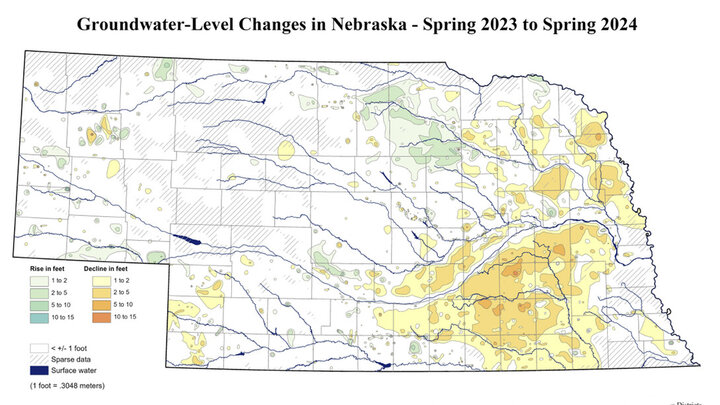By Dylan Mangel, Extension Plant Pathologist
Pathogen
Sudden Death Syndrome (SDS) is caused by the soilborne fungus Fusarium virguliforme. This fungus overwinters in residue and in soil as chlamydospores, which are durable survival spores (similar to oospores of Phytophthora spp.) Foliar symptoms are caused by toxin(s) produced by the fungus, which are translocated to the foliage from infected root and crown tissue.
Disease Symptoms
Foliar symptoms of sudden death syndrome typically do not appear prior to soybean flowering. Early symptoms at the R3 and later growth stages consist of the presence of chlorotic (yellow) spots on the leaves between veins. As the symptoms advance, the yellow spots may coalesce but stay between the veins at the leaf margin. Eventually, the yellow areas between the veins will become brown (necrotic) as the tissue dies.
Roots will exhibit a root rot on the tap root. The discoloration of the vascular tissue is contained to the outer stem area (xylem vessels) and can extend up the stem from the soil line. The pith will remain white. (This is a key symptom to differentiate SDS from brown stem rot.)
Pods may be aborted and plants may defoliate early. Defoliated plants will retain their petioles (leaf stems). Retention of the petioles is a symptom frequently associated with SDS.
Symptoms on the root system are difficult to distinguish from other soybean root rots. When roots are removed from soil, the fungus is sometimes visible on the outer root surface. In some rare cases, this fungal growth will be blue.
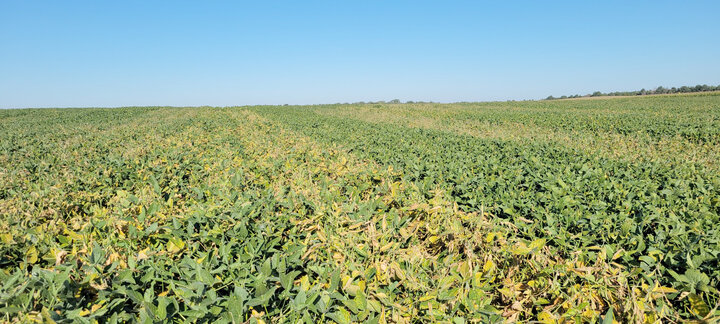
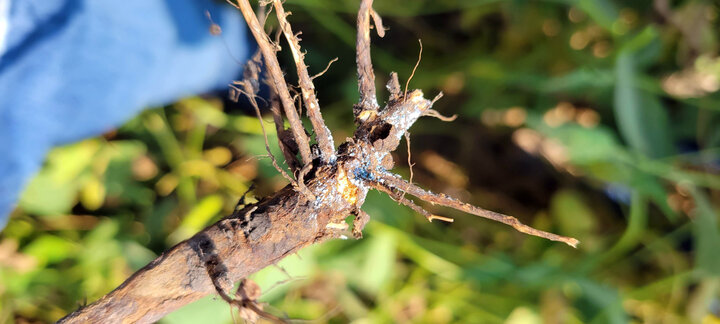
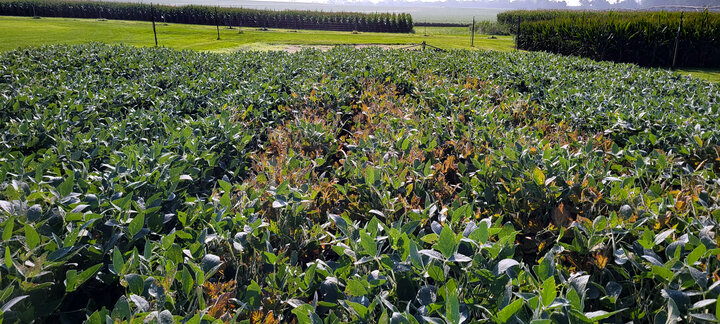
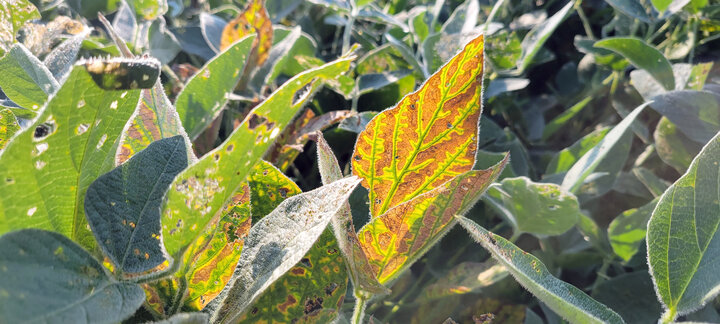
Favorable Environmental Conditions
Sudden Death Syndrome is favored in high-yield environments. The disease is more prevalent during cool, wet growing seasons and is favored by early planting in cool soils. Hot, dry weather appears to slow disease development, but depending on the stage and infections — which may have occurred prior to dry weather — it can become severe under these conditions. Heavy rains around the flowering time promote foliar symptom development.
Management
Genetic Resistance
Soybean varieties with moderate to high levels of resistance to SDS are available. Varieties with partial resistance or tolerance to SDS should be considered in fields known to be affected by this disease. These varieties will not prevent disease completely, but they can protect yield.
Cultural Practices
Avoid early planting in fields know to be severely affected by SDS. Two-year rotation out of soybean production and maintaining good crop nutrition has been shown to reduce the severity of SDS.
Chemical/Biological Control
There are chemical seed treatments that provide protection against sudden death syndrome. Find up to date efficacy information on product performance at the crop protection network or in the Extension Guide for Weed, Disease, and Insect Management in Nebraska (EC130).
Additional Information
- Crop Protection Network Efficacy Guides: https://cropprotectionnetwork.org/publications/fungicide-efficacy-for-control-of-soybean-seedling-diseases
- Nebraska Extension EC130: https://marketplace.unl.edu/extension/ec130.html
Updated from a previous article by Loren J. Giesler, Former Extension Plant Pathologist
Soybean Diseases
- Soybean Diseases (Home)
- Anthracnose
- Bacterial Blight
- Bacterial Pustule
- Bean Pod Mottle Virus
- Brown Spot
- Brown Stem Rot
- Charcoal Rot
- Frogeye Leaf Spot
- Phytophthora Root and Stem Rot
- Pod and Stem Blight
- Purple Seed Stain
- Rhizoctonia Root Rot
- Sclerotinia Stem Rot
- Soybean Cyst Nematode (SCN)
- Soybean Mosaic Virus
- Soybean Rust
- Stem Canker
- Sudden Death Syndrome (SDS)



